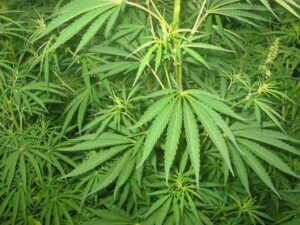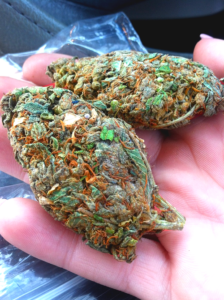
Weed in Al ‘Awwamiyah — a practical, careful guide.
Introduction
Al ‘Awwamiyah (also spelled Al-Awamiyah) is a small but historically rich town in the Qatif Governorate of Saudi Arabia’s Eastern Province. It is a community with strong local identity and a complex recent history within the socio-political landscape of the Eastern Province. If you live in or are traveling to Al ‘Awwamiyah, it’s important to understand how local conditions and national law shape the realities around controlled substances such as cannabis (commonly called “weed”). This article provides a thorough, non-judgmental overview of the legal situation, social context, health considerations, harm-minimizing suggestions (that do not facilitate illegal activity), and practical FAQs. (Wikipedia) Weed in Al ‘Awwamiyah
Quick headline summary (TL;DR) Weed in Al ‘Awwamiyah
- Cannabis (weed) is illegal in Saudi Arabia. Possession, trafficking, and smuggling are treated as serious criminal offences and can carry severe penalties, including long prison terms and, in drug-trafficking cases, capital punishment. The Saudi legal system has been enforcing harsh penalties for drug offences in recent years.
- In Al ‘Awwamiyah (part of the Qatif area), social and political sensitivities add extra layers of risk for residents and visitors; local community dynamics and a history of conflict in the region mean interactions with security forces and the justice system are especially risky. (Wikipedia)
1. Al ‘Awwamiyah — local context Weed in Al ‘Awwamiyah
Al ‘Awwamiyah is a town in the Qatif Governorate in the Eastern Province of Saudi Arabia. The region is majority Shia and has experienced political tensions and episodes of unrest in the modern era; these historical tensions shape everyday life, governance and law-enforcement patterns. Economically, the Eastern Province is heavily linked to oil and to traditional agriculture in oasis areas historically. Understanding local sensitivity is important: law enforcement in the Eastern Province has at times been intensified for political or security reasons, which can indirectly affect how criminal investigations and arrests are conducted. (Wikipedia)
2. The legal framework: Saudi law and narcotics
National law — zero tolerance and severe penalties
Saudi Arabia’s legal framework treats narcotics—whether hashish, cannabis, heroin, cocaine or synthetic drugs—as extremely serious crimes. The Kingdom’s narcotics laws, enforced by the Interior Ministry and by the courts, criminalize possession, use, trafficking and smuggling. Punishments range from long prison sentences and heavy fines to corporal punishment and, in trafficking or large-scale smuggling cases, the death penalty. Recent reporting and rights organizations indicate an increase in executions for drug-related offences in the last few years.
What “possession” and “trafficking” mean in practice Weed in Al ‘Awwamiyah
Under Saudi law, authorities often differentiate between possession for personal use and trafficking; however, the thresholds and how cases are classified can vary, and courts have imposed the harshest sentences even in cases that outside observers consider non-violent or involving small quantities. Foreign nationals convicted of drug offences are disproportionately affected, according to human rights monitoring groups.
3. Recent trends and international concern
In the mid-2020s international human-rights organizations documented a surge in death sentences and executions in Saudi Arabia for drug offences, and flagged the poor adequacy of legal representation for many of those convicted.
4. Health considerations and medical perspectives
Physical and mental health effects Weed in Al ‘Awwamiyah
Cannabis can produce a variety of short-term effects (e.g., altered perception, mood changes, impaired coordination, anxiety or panic in some users) and long-term effects with heavy or long-term use (e.g., dependence, cognitive impacts in some users, exacerbation of certain mental-health conditions).
Harm reduction (non-procedural, high-level) Weed in Al ‘Awwamiyah
Harm-reduction approaches emphasize reducing risk and protecting health and rights. In a setting where a substance is illegal and carries severe penalties, the safest legal option is abstinence.
5. Social and family impact in Al ‘Awwamiyah
Because Al ‘Awwamiyah is a close-knit town with strong community ties, a drug-related arrest or accusation can have profound social consequences: stigma, family distress, economic hardship and long-term legal consequences. Social support networks are critical, but any assistance must be careful about legal exposure.
6. If you live in or are visiting Al ‘Awwamiyah — practical guidance
This section focuses on legal and safety-oriented advice only. It does not instruct on how to obtain, hide, or use illegal substances.
- Know the law — Cannabis is illegal and punishments are severe. Do not possess, transport, purchase, or use cannabis in Saudi Arabia.
- Avoid risky situations — avoid any setting where illegal drugs are present or being exchanged. Associations with people involved in trafficking or smuggling can carry legal risk.
- If arrested or investigated — you have the right to legal counsel. If you are a foreign national, request consular assistance immediately. If you’re a local resident, family members should seek experienced legal counsel. Given the known concerns about fairness of trials in some drug cases, timely legal help can be crucial.
7. Alternatives and safer options
If you are looking to relax, manage pain, or address anxiety — and you are in a country where cannabis is illegal and heavily punished — consider legal, low-risk alternatives:
- Legal medical care: consult a licensed physician about proven treatments (e.g., for chronic pain, anxiety, sleep disorders).
8. Human rights and advocacy considerations
International groups (Amnesty International, human-rights NGOs and some media outlets) have criticized Saudi Arabia’s expanded use of capital punishment for drug offences, highlighting concerns about due process, representation, and the disproportionate impact on foreign nationals and marginalized groups. These concerns are part of a larger conversation about criminal justice reform, public health and human rights in the kingdom.
10. Frequently Asked Questions (FAQs)
Q1 — Is cannabis (weed) legal anywhere in Saudi Arabia?
No. Cannabis is illegal across the Kingdom. Possession, use, trafficking and smuggling are criminal offences and may carry severe penalties.
Q2 — What happens if someone is caught with a small amount of weed in Al ‘Awwamiyah?
Outcomes vary, but even small quantities have led to arrests and harsh penalties in Saudi Arabia. The distinction between “personal use” and “trafficking” depends on evidence, amounts, and prosecutorial discretion; in practice, courts have sometimes imposed severe sentences in cases that outside observers would consider minor. Human-rights groups have documented unfair trials in some cases.
Q3 — Can foreign nationals expect different treatment?
Foreign nationals are often over-represented among those executed or harshly sentenced in drug cases, according to Amnesty and other groups. Consular assistance is essential if a foreign national is detained.
Q4 — If someone needs help with substance use, where can they go?
Local medical clinics and hospitals are the first line for medical emergencies. For ongoing support, try to locate licensed healthcare providers or confidential counseling services. International or online resources can offer guidance, but the best option is professional medical advice. Given the legal context, people may be cautious about seeking care; nonetheless, emergency treatment should always be sought in life-threatening situations.
11. Responsible research and journalism notes
If you are writing, reporting or researching this topic:
- Cite reputable sources and international human-rights reports.
- Be careful with language — differentiate between documented facts and allegations or advocacy positions.
12. Final thoughts
Al ‘Awwamiyah, like many communities in the Eastern Province, has a distinctive history and social fabric. Cannabis use in such contexts is shaped by multiple forces: national law (which is strict), public-health needs, social and family dynamics, and the broader human-rights environment. The safest course of action for residents and visitors is to avoid illegal substances, seek medical care for health problems, and pursue lawful, medically-approved treatments for pain, anxiety or other conditions.
I have used Global Weedworld (Globalweedworld@galaxyhit.com) at least 4-10 times and every time it has been a top notch.
He is the best local plug you can find around. He is very pleasant, friendly and fast. He is a lifesaver.
He sells top shelf WEED and other stuffs at moderate prices. I will always recommend this guy when people ask me my ” go-to”.
All you have to do is follow his instructions.
Just send him an email and I bet you will come back for more once you finish with what you bought because his quality is amazing.
Also Contact him on his telegram link telegramhttps://t.me/GlobalweedWorld
⚠️ Know that he do not have telegram channels only the telegram link above

The strain was exactly what I was looking for. It had that perfect balance, and the high was smooth. Also, the packaging was discreet and professional. Really impressed
I’ve been buying online for a while, but this shop’s service and product quality set them apart.
Everything was fresh, potent, and the customer service is outstanding
My first purchase and I’m hooked.
Excellent product and the customer support was super helpful in answering all my questions. Highly recommend this site
From browsing to checkout, everything was seamless. Delivery was on time, and the product exceeded my expectations. I’ll be recommending this to my friends
told me that he doesn’t accept cash and i thought he is one of those idiots who took advantages of people but i decided to give him a try by making the payment first using bitcoin, surprisingly he arrived within the time he promised me and i received what i ordered. thank you, Global weed world, whenever i return here you will always be my plug without doubt.
I’ve been buying from a lot of different places, but this one stands out. The bud is top-notch, and the prices are reasonable.
Will be ordering again soon! Amazing experience! The product was exactly as described,
and the packaging was on point—safe and odor-free. Thank you!
Delivery was crazy fast, and the product… This place is setting the bar for online weed shops. Keep doing what you’re doing. You’ve got a loyal customer for life.
I was worried about ordering online, but the packaging was perfect completely. You can tell they care about their customers. Fast replies and reliable support.